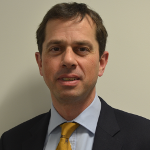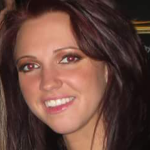
Bruce Gray is Improvement Lead for the Strategy and Transformation Team at Heart of England NHS Foundation Trust.
We’ve probably all heard people (and if we’re honest, ourselves too) begin a sentence using the phrase “with respect, blah blah etc etc”. That this usually happens halfway through a rapidly-heating debate gives the game away in that it’s usually a coded message that says the speaker is correct and the other person is wrong and/or an idiot.
It’s a challenge alright, but it’s not respectful! Why? Because it doesn’t need an Alan Turing to break this code; people get it. They understand that they are being spoken to in a dismissive manner, indeed a disrespectful manner, and they react consciously or unconsciously by shrinking away, or possibly by upping the ante – i.e. the debate becomes a full-blown-argument of the full half-hour variety.
So this respectful challenge is a tricky business. If I say, “with respect, blah blah etc etc” it could come across as patronising, rude and, well, disrespectful. So what is going on under the hood – just what are the mechanics of genuinely respectful challenge?
I’ve been thinking about this because I’ve been asked to deliver a couple of workshops to clinical and operational teams on “respectful challenge”. So writing this blog is a useful opportunity to organise my jigsaw of thoughts into a beautiful picture in which the individual pieces blend seamlessly into the whole…and, more prosaically, with a beginning, middle, and end, with enough material to last two hours.
The “beginning”…
For me this starts with having a model with which to make (some) sense of human behaviour and interactions, with my personal favourite being transactional analysis (TA). This specifically refers to the functional ego state model; the Parent-Adult-Child formulation that you may have heard of or come across. It goes like this:
In our “parent ego state”: feelings, thoughts, and behaviours swallowed whole from our significant carers when young and copied. This can be further characterised as follows:
- Negative controlling adult (bossy, blaming, aggressive)
- Positive controlling adult (inspiring, directing, protecting)
- Negative nurturing adult (smothering, inconsistent, patronising)
- Positive nurturing adult (understanding, compassionate).
In our “adult ego state”: feelings, thoughts, and behaviours that are based on the here and now. We use our adult to reason, evaluate, gather information, and formulate strategies.
In our “child ego state”: feelings, thoughts, and behaviours learnt as children and replayed. This can be further characterised as follows:
- Negative adapted child (anxious, rebellious, submissive)
- Positive adapted child (social, polite, considerate)
- Negative free child (egocentric, reckless, selfish)
- Positive free child (creative, expressive, playful).
The idea here is that starting from one position can “hook” a response from its complementary position, where parent is complementary to child/child is complementary to parent, and adult is complementary to adult. So saying “with respect, blah blah” (i.e. patronising) risks hooking a response from the negative adapted child ego state ranging across anxious, rebellious, or submissive, depending on the relationship and context.
The real killer is that all this goes on out of awareness and in the blink of an eye – much of the time we don’t notice but our sub-conscious does and goes on to feed us the next line which ups the ante, e.g. “don’t you patronise me, with your superior ways blah blah etc etc”.
The way out of this nosedive is to disengage the autopilot and engage thinking, and the way to achieve that is to ask a question, which is an adult ego state thing to do, that will (hopefully, if you haven’t left it too late) ‘hook’ an adult ego state response. Et voila, we are now playing the ball not the man.
The “middle”…
The “OK Corral” is another concept from TA that is incredibly useful to overlay on the functional ego state model. The essence of this is that I can consider myself as OK or Not OK, and I can consider you as OK or not OK. So if:
- I’m OK, you’re not OK One-up position (no respect for you).
- I’m not OK, you’re not OK Hopeless position (no respect for you or me)
- I’m not OK, you’re OK One-down position (no respect for me).
- I’m OK, you’re OK Healthy position (mutual respect – adult-adult)
We are constantly “decoding” these positions unconsciously in ourselves and others, and it does affect our behaviours and interactions. In other words, do-as-you-would-be-done-by, and be authentic while doing it.
The “end”…
There’s a dual-meaning at work here; end as in what follows middle, and end as in means to an end. There’s a lot written in lean circles on respectful challenge that tracks back to the Toyota Production System. Jim Womack (co-author of ‘The Machine That Changed the World’ and ‘Lean Thinking’, as well as founder and senior advisor of the Lean Enterprise Institute) has written on Toyota and their practice of “respect for people”:
Managers begin by asking employees what the problem is with the way their work is currently being done. Next they challenge the employees’ answer and enter into a dialogue about what the real problem is. (It’s rarely the problem showing on the surface).
Then they ask what is causing this problem and enter into another dialogue about its root causes. (True dialogue requires the employees to gather evidence on the gemba – the place where value is being created — for joint evaluation).
Then they ask what should be done about the problem and ask employees why they have proposed one solution instead of another. (This generally requires considering a range of solutions and collecting more evidence).
Then they ask how they – manager and employees – will know when the problem has been solved, and engage one more time in dialogue on the best indicator.
Finally, after agreement is reached on the most appropriate measure of success, the employees set out to implement the solution.
…The manager challenges the employees every step of the way, asking for more thought, more facts, and more discussion, when the employees just want to implement their favoured solution.
Does all that challenging sound like respect for people? Jim thinks so because:
…I’ve come to realize that this problem solving process is actually the highest form of respect. The manager is saying to the employees that the manager can’t solve the problem alone, because the manager isn’t close enough to the problem to know the facts. He or she truly respects the employees’ knowledge and their dedication to finding the best answer.
But the employees can’t solve the problem alone either because they are often too close to the problem to see its context and they may refrain from asking tough questions about their own work. Only by showing mutual respect – each for the other and for each other’s role – is it possible to solve problems, make work more satisfying, and move organisational performance to a higher level.
And I think so too because it’s an approach completely congruent with the ‘adult-to-adult ego state’ and the ‘I’m OK, you’re OK’ position.
The (means to an) end…
Aviation safety work emphasises the flattening of hierarchy through the ability to speak up and be listened to as important factors in safely navigating high risk and crisis situations. Both of these factors are reinforced when people interact using adult-to-adult, OK-OK, respectful challenge behaviours.
But crises only happen occasionally, so focusing only on high risk and crisis situations misses the big prize of respectful challenge which is to make it part of daily practice, like Jim Womack describes above, because then it becomes an “in-the-muscle” thing that reinforces learning, change, and improvement because it follows the trajectory of:
Different thinking – Different behaviours – Different culture
Contrast this with the prevailing and static culture in many NHS organisations where, under the barrage of command and control, the default (and usually safest) response is to demur to hierarchy.
So, this is the story I will be telling in the forthcoming workshops; that understanding, practicing and expecting respectful challenge is of critical importance in the NHS of today and the future, because the practice is at the heart of meaningful learning, change and improvement.


 As comfortable as we have become over the last eight months, there are still times where we are reminded that we have a long way to go. As a junior doctor you often feel powerless to execute change yourself. Sometimes you feel as if you are just a small cog in a giant wheel of change that is rusty and stuck; a wheel crying out for oil like the Tin Man from “The Wizard of Oz”.
As comfortable as we have become over the last eight months, there are still times where we are reminded that we have a long way to go. As a junior doctor you often feel powerless to execute change yourself. Sometimes you feel as if you are just a small cog in a giant wheel of change that is rusty and stuck; a wheel crying out for oil like the Tin Man from “The Wizard of Oz”.


 The data gathering had begun, and so had a new phase of learning. This was the practical problem phase (PPP). Though able to take a patient list on MS Word from 0-60 in under 5 seconds, even our technical skillset was challenged by the complexities surrounding the creation of a trust-wide smartphone app. For the notes group, financial restrictions and economical sustainability were to become issues all too reminiscent of budgeting out those med school loans on gel pens and baked beans. Basic things such diplomatic allocation of tasks within the groups and communication between all members in sub-teams soon emerged as challenges in themselves.
The data gathering had begun, and so had a new phase of learning. This was the practical problem phase (PPP). Though able to take a patient list on MS Word from 0-60 in under 5 seconds, even our technical skillset was challenged by the complexities surrounding the creation of a trust-wide smartphone app. For the notes group, financial restrictions and economical sustainability were to become issues all too reminiscent of budgeting out those med school loans on gel pens and baked beans. Basic things such diplomatic allocation of tasks within the groups and communication between all members in sub-teams soon emerged as challenges in themselves. Yes, the success of our proposed data-gathering and initial interventions would rely at least 99.9% on our abilities to sweet-talk our multidisciplinary team colleagues and key administrative staff. Many were reluctant to engage initially, and the challenge was convincing them to give up their time for a concept that would have no immediate positive impact. Unfortunately for them they were up against expert hasslers. Six months of exposure to acute radiology has given us first hand experience of the benefits of perseverance against all odds, and an XXL helping of enthusiasm to go with it.
Yes, the success of our proposed data-gathering and initial interventions would rely at least 99.9% on our abilities to sweet-talk our multidisciplinary team colleagues and key administrative staff. Many were reluctant to engage initially, and the challenge was convincing them to give up their time for a concept that would have no immediate positive impact. Unfortunately for them they were up against expert hasslers. Six months of exposure to acute radiology has given us first hand experience of the benefits of perseverance against all odds, and an XXL helping of enthusiasm to go with it. One of the best things about being an FY1, excluding consultant-funded coffees and 20% off at Nandos, is the camaraderie of it all. There’s something about strutting assertively round this shiny, world-class hospital, while secretly having minimal clue about what you’re doing, that binds you all together. Working with friends has been enjoyable, but where passions run high there will inevitably be conflict. Ever mulled over the impossibility of having lengthy debates with your mates about the structural design of folders with secondary loss of sleep? In our experience this is not only possible, but unavoidable. At such testing times, we have had to work hard as a team to avoid descent into a PMQs-esque verbal fracas. We are all developing our skills in the art of compromise, learning to balance the communication of our own opinions with the importance of listening to others. After a challenging contest so far: Obstacle-itis: 0 vs heroic QIP doctors: 1.
One of the best things about being an FY1, excluding consultant-funded coffees and 20% off at Nandos, is the camaraderie of it all. There’s something about strutting assertively round this shiny, world-class hospital, while secretly having minimal clue about what you’re doing, that binds you all together. Working with friends has been enjoyable, but where passions run high there will inevitably be conflict. Ever mulled over the impossibility of having lengthy debates with your mates about the structural design of folders with secondary loss of sleep? In our experience this is not only possible, but unavoidable. At such testing times, we have had to work hard as a team to avoid descent into a PMQs-esque verbal fracas. We are all developing our skills in the art of compromise, learning to balance the communication of our own opinions with the importance of listening to others. After a challenging contest so far: Obstacle-itis: 0 vs heroic QIP doctors: 1.

 Simply, we wanted to change the world (or at least the world according to UCLH). Much debate lead to two grand plans. The first to revolutionise the medical notes system at UCLH to make it standardised across the tower. The second was to improve the phlebotomy process to avoid wastage of both time and resources.
Simply, we wanted to change the world (or at least the world according to UCLH). Much debate lead to two grand plans. The first to revolutionise the medical notes system at UCLH to make it standardised across the tower. The second was to improve the phlebotomy process to avoid wastage of both time and resources. After some (mostly cordial) discussion, we decided that we would concentrate on information about blood bottles, eg what colour bottle and which lab for particular tests. This is something taken for granted by busy consultants and registrars who say, “I want an ACTH and cortisol tomorrow” without consideration of exactly what that entails. Often as an FY1 you find yourself in a position where you simply don’t know what bottle to use, and it can be a massive waste of time finding out. This is what we wanted to change. However, our intervention had to wait. We needed to do some groundwork to establish if this was a realistic project. We needed to start pestering labs and scouring the intranet to find what information was out there and see if we could use it, and make it accessible.
After some (mostly cordial) discussion, we decided that we would concentrate on information about blood bottles, eg what colour bottle and which lab for particular tests. This is something taken for granted by busy consultants and registrars who say, “I want an ACTH and cortisol tomorrow” without consideration of exactly what that entails. Often as an FY1 you find yourself in a position where you simply don’t know what bottle to use, and it can be a massive waste of time finding out. This is what we wanted to change. However, our intervention had to wait. We needed to do some groundwork to establish if this was a realistic project. We needed to start pestering labs and scouring the intranet to find what information was out there and see if we could use it, and make it accessible.






